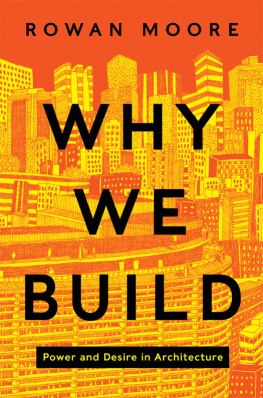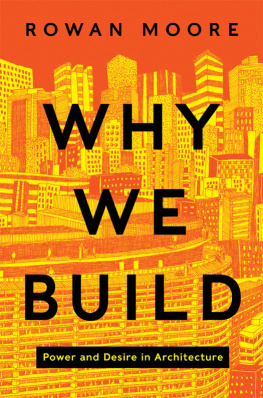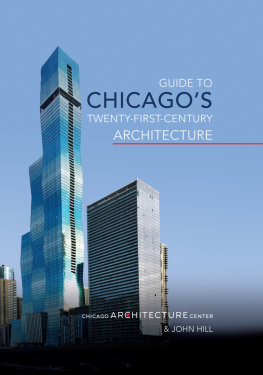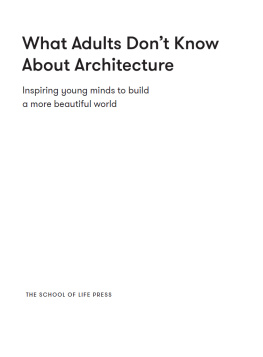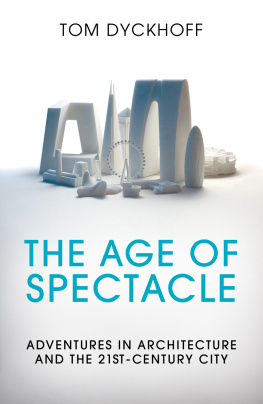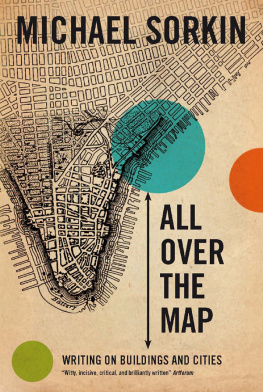
To L, H and S
CONTENTS

A helicopter flew through the desert air, evoking, as such machines do, attack: marines, Desert Storm, Francis Ford Coppola, The Ride of the Valkyries, the smell of napalm in the morning. Here it had a more pacific purpose. Hung from its muttering blades was a capsule of journalists, imported to admire the works of His Highness Sheikh Mohammed bin Rashid al-Maktoum.
Below were the Sheikhs achievements. There was the famous Palm Jumeirah island, where Dutch engineers had been imported to create 110 kilometres of new beach, carrying eight thousand valuable homes and over thirty hotels. Using skills earned in their countrys centuries-long resistance to the sea, the Sheikh had invited them to go on the offensive, carving out of the ancestral adversary a giant inhabitable logo of trunk and fronds that would become world-famous before it was built. There were scatterings and bunchings of towers. There was the biggest shopping mall in the Middle East, and a newer one about to surpass it. There was the Burj Dubai, the tallest structure in the world and still rising, slipping on its sheath of stainless steel like a snake reversing into its skin. The flying journalists were being taken to see the site of the Harbour Tower, which would be yet bigger than the Burj Dubai, as was dutifully reported in Western newspapers in the following days.
What couldnt be seen from the helicopter was the crisis in the drains. Dubais buildings emptied their sewage into septic tanks, whence they were taken to the Al-Aweer sewage works, on the road out towards the desert and Oman. The sewage works had not kept pace with the citys growth, and a long line of tankers, some painted with flowers by their Indian drivers, stood for hours in the heavy heat as they waited their turn to offload. (And I, though unable to take up the invitation I was offered on the helicopter ride, did get to see this turgid caravan.)
Some drivers, tired of waiting, had taken to pouring their cargo at night into the rainwater drainage system, which discharged straight into the sea. The owner of a yacht club, finding that his business was affected by the sight and smell of brown stuff on the bright white boats, took photographs of the nocturnal dumpings and gave them to the press. The authorities responded, tackling the symptoms but not the cause, by introducing severe penalties for miscreant drivers.
Both helicopter ride and sewage crisis occurred in October 2008, and the combination of celestial fantasy and chthonic reality revealed a city on a cusp. Before that month journalists and trendy architects had been lining up to feed on the flow of amazing-but-true tales of construction that the Emirate released at a steady rate, interrupted only by mutterings from the liberal press about the conditions of migrant workers. Afterwards equally juicy but less welcome headlines were generated: abandoned building projects; Donald Trump pulling out; and out-of-work expats leaving their Ferraris in the airport car park, keys in the ignition, fleeing Dubai for ever because they could not keep up the payments on the loan. Nakheel, developers of the Palm and the proposed Harbour Tower, laid off hundreds of staff.
In November a party was held to celebrate the opening of the Atlantis Hotel, at the tip of the Palm, a $1.5 billion work of tree-trunk columns and writhing chandeliers, a Blofeltian phantasmagoria of giant aquaria and rooms with views of sharks, which suffered the rare ignominy of being accused of bad taste by the British tabloid the Sun. The party was an epic of extravagance: Kylie was hired to sing for a large fee, other celebrities were flown in, and a firework display was mounted seven times greater than that put on for the Beijing Olympics. The event cost 13 million, or 6,500 for each of its two thousand guests. As Dubais stock exchange had by then fallen by 70 per cent from its peak, it made too perfect an image of hubris for reporters to miss, and they did not. This was an end-of-empire party, the last excess before the fall, Romans indulging themselves with the barbarians at the gates. Soon further rumours swirled, that the Palm, and with it the Atlantis hotel resort, were, like the ancient city of the same name, sinking. All the disbelief suspended in the face of Dubais dazzling growth (who and what are these buildings for?) returned.
DUBAI LIVES OFF ABSTRACT FLUCTUATIONS of money, which it strove to make concrete with construction. Here building became a fable, a source of identity, an end in itself.
The emirates modern growth was driven by the fact that it has less oil than its neighbours, and so must base its future economy on other business, including financial services and tourism. It set out to be an Arab Singapore, a trading city-state that lives off its wits, and off an advantageous position on routes between larger countries. Its assets were its relative stability and peacefulness, its ability to position itself between the Islamic and the Western worlds, and a willingness to respond to the desires of business. It also has winter sunshine at a distance and in a time zone that are reasonably convenient for northern European tourists. Combined with security from mugging and dangerous diseases, and high-quality tax-free shopping, it could make itself a popular destination for holidays.
These assets were fragile and not unique. Other cities could do something similar. And so Dubai had to make the intangible tangible. It had to create a brand, an image of itself to convince others of its pre-eminence. The brand would be created through construction, which would be pleasing to Sheikh Mohammed: like other rulers, from Rameses II to President Nursultan Nazarbayev of Kazakhstan, he loved building things.
Mohammed was also a ruler who, as the third of four brothers, had to secure his position. Less than a century ago, in this region, multiple fratricide was a common solution to the problems arising when rulers left many sons, by more than one wife. In more civilized times, Mohammed secured his position by force of character. He became the Crown Prince and effective leader of Dubai in 1995, and the official ruler in 2006, following the death of his oldest brother, whose son had also died. He built his authority in several ways. As a graduate of the Mons Officer Cadet School in Aldershot, and as the United Arab Emirates Defence Minister since the age of twenty-eight, he had a military reputation. When, in the 1970s, Dubai was a popular stop-off for hijacked airliners, he negotiated with hostage-takers, delaying them, defusing their threats, and getting them to fly on either to Libya, where they were set free, or Mogadishu, where they were gunned down by German commandos.
He was, with his brothers, an enthusiastic owner and breeder of racehorses, but outshone them all to become the most successful in the world. He distinguished himself as a rider, in endurance races over 120 kilometres. He was, and is, a poet in the Arab dialect of Nabati. According to his personal website, he is widely acknowledged as one of the finest exponents of Nabati verse... poetry has allowed Sheikh Mohammed to express the creative, sensitive side of his nature, which he has little chance to display in the political arena. He has written:
Triumphs whoever stands firm
And for his right fights.
Also, in The Path of Lovers, after talking of eyes like the eyes of the kohled lanner falcon,
Next page
